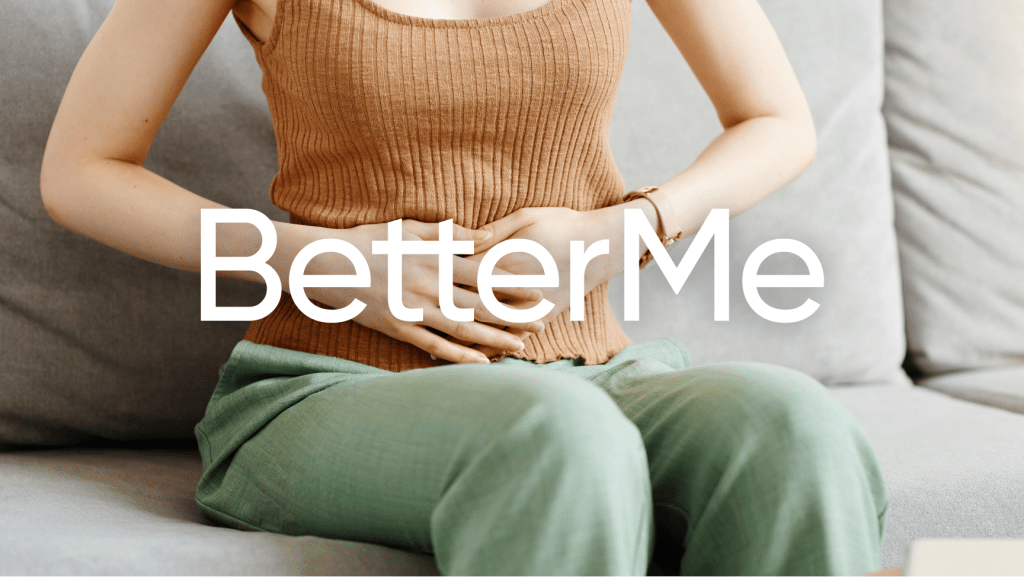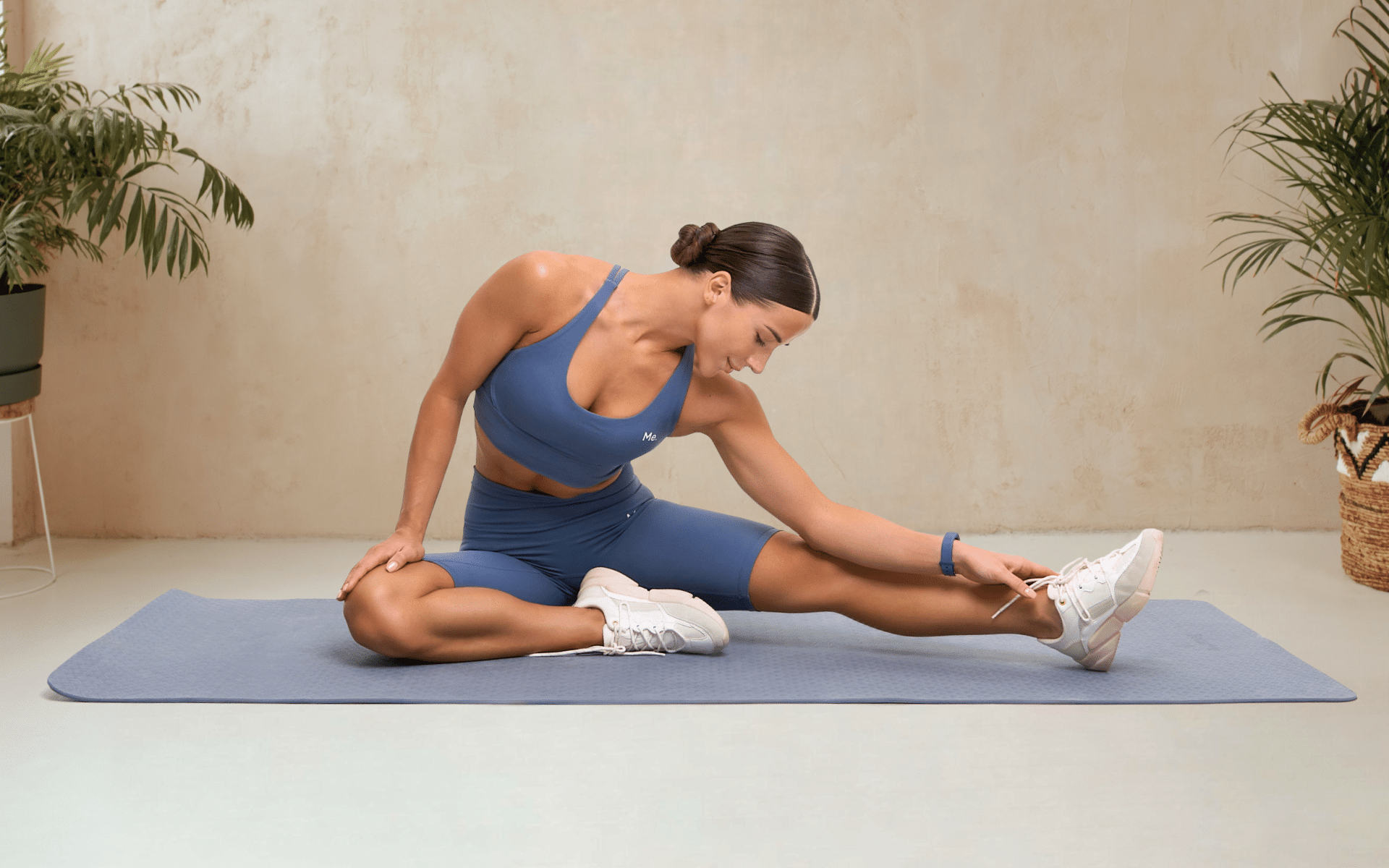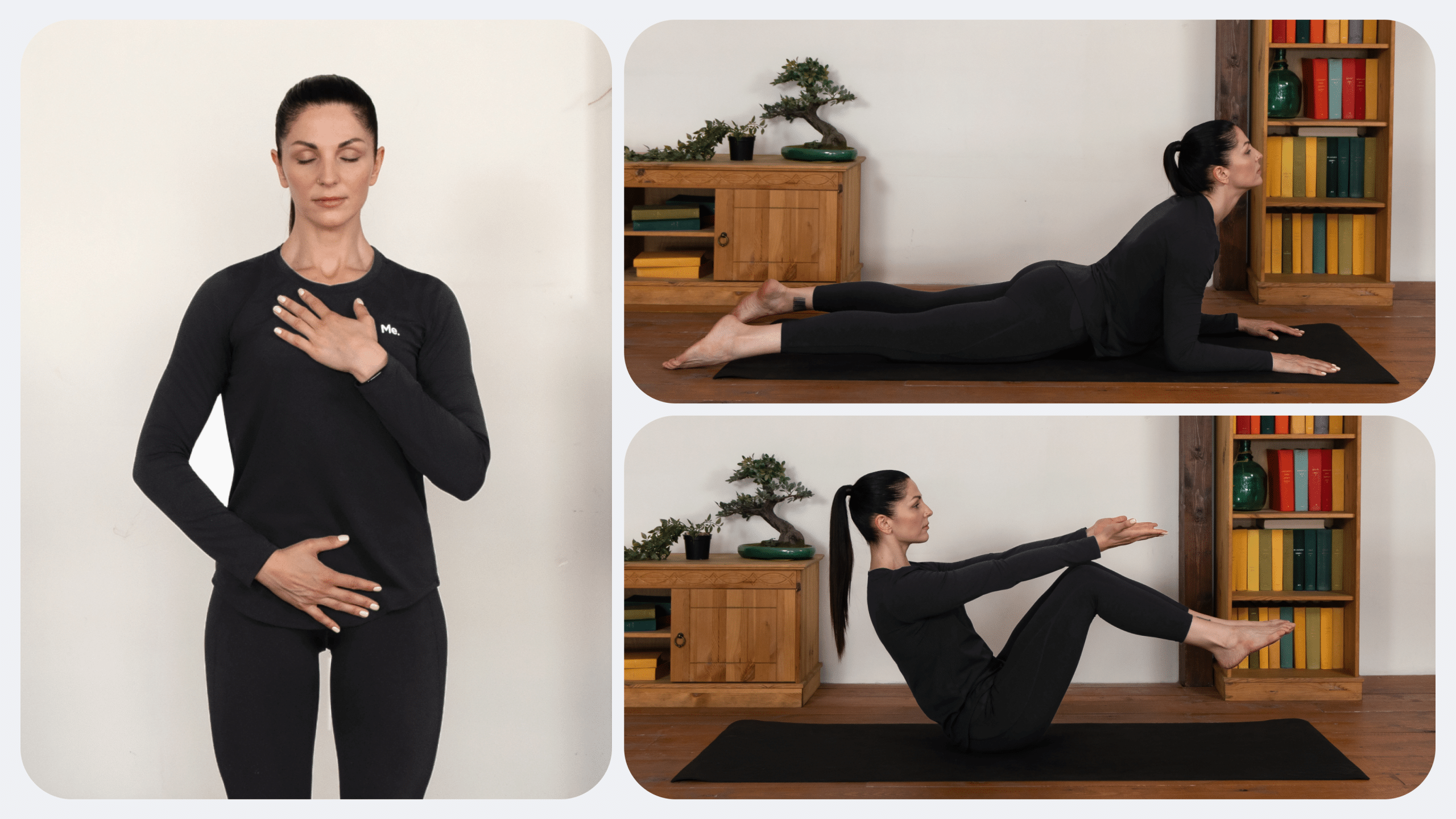Edema, or water retention, is the abnormal accumulation of fluid in your body. It usually occurs in your hands, feet, ankles, and legs, but it can happen anywhere in your body (9). While edema can be uncomfortable and cause swelling and pain, it’s usually not a serious condition.
Get your personalized
meal plan!
There are many possible causes of edema, including:
- Pregnancy – hormonal changes can cause fluid retention (20).
- Certain medications – steroids, estrogen, and some high blood pressure medications can lead to edema (1).
- Standing or sitting for long periods – this can cause fluid to pool in your lower extremities (6).
- Inactivity – not moving enough can also cause fluid retention (32).
- Lymphatic system problems – the lymphatic system helps drain excess fluid from your tissues, so if it’s not working properly, edema can occur (23).
- Heart failure – when your heart isn’t pumping efficiently, fluid can back up into your tissues (11).
- Kidney disease – kidneys that aren’t working properly can cause fluid retention (10).
- Obesity – excess weight can put pressure on your veins and prevent proper blood circulation (35).
- Capillary damage – this can cause fluid to leak out of your blood vessels and into your tissues (8).
- Malnutrition – not getting enough protein can cause fluid retention (22).
- Infections – certain viral and bacterial infections can trigger inflammation and swelling (31).
- Allergies – histamine, a substance released during an allergic reaction, can cause fluid retention (37).
- Medication side effects – some drugs, such as calcium channel blockers and non-steroidal anti-inflammatory drugs (NSAIDs), can cause edema (7) (29).
While edema isn’t usually serious, it can be a sign of a more serious condition in some cases. If you have edema along with shortness of breath, chest pain, or difficulty breathing, call your doctor right away as these could be signs of heart or lung disease.
Normally, a few lifestyle changes can help reduce edema. Here are some expert-approved tips:
1. Reduce Your Salt Intake
Salt is made up of sodium and chloride, two electrolytes that help regulate fluid balance in your body. When you eat foods high in salt, your body holds onto more water to dilute the sodium concentration. This can lead to water retention and edema (4) (15).
To reduce your risk of edema, it’s important to limit your salt intake. The American Heart Association (AHA) recommends consuming no more than 2,300 milligrams (mg) of sodium per day, or about 1 teaspoon of salt (21).
If you have edema, you may need to restrict your salt intake even further. Your doctor can help you determine how much salt you should consume each day.
Some high-sodium foods to watch out for include:
- Processed foods – these often contain high levels of salt, so be sure to check the nutrition label
- Canned soups and vegetables – these can also be high in salt
- Condiments – such as soy sauce, ketchup, and BBQ sauce, often contain a lot of salt
- Fast food – meals from fast food restaurants are typically high in salt
Read More: The 7-Day Hydration Challenge: Try This Expert-Approved Tips To Drink More Water
2. Increase Your Magnesium Intake To Reduce Water Retention
Magnesium is a mineral that helps regulate fluid balance in your body. It also helps your body produce energy and relaxes your muscles (24).
Low magnesium levels have been linked to water retention. Further studies are needed, but preliminary research shows that magnesium supplementation can decrease premenstrual syndrome (PMS) symptoms including water retention (25).
Good sources of magnesium include:
- Leafy green vegetables – such as spinach, Swiss chard, and beet greens
- Nuts and seeds – such as almonds, pumpkin seeds, and sunflower seeds
- Beans and legumes – such as black beans, lentils, and kidney beans
- Whole grains – such as brown rice, oats, and quinoa
- Fruits and vegetables – such as bananas, avocados, and dark chocolate
3. Get Moving
Exercise is important for overall health, but it can also help reduce edema (18). When you exercise, your muscles contract and push fluid back into your circulatory system. This helps reduce the amount of fluid in your tissues and decreases swelling.
Aim for at least 30 minutes of moderate-intensity exercise most days of the week. This could include walking, biking, swimming, or light jogging.
If you’re new to exercise, start slowly and gradually increase your activity level over time. Also, while exercising, be sure to wear loose-fitting clothing and shoes to avoid constricting your blood vessels and worsening edema.
4. Reduce Water Retention: Compress Your Edema
Wearing compression garments is another effective way to reduce edema. These garments help reduce swelling by applying pressure to your skin and tissues (17).
Compression garments come in a variety of forms, such as:
- Stockings – these are typically worn on your legs and feet and come in different levels of compression
- Socks – similar to stockings, compression socks are often used to relieve swelling in the feet and lower legs
- Wraps – these can be used on any part of your body and are available in different levels of compression
When choosing a compression garment, it’s important to select one that fits well and provides the right level of compression. If the garment is too tight, it can cause discomfort and make your edema worse. If it’s too loose, it won’t be effective.
Compression garments are available in both medical and non-medical stores. If you’re not sure which type of garment to choose, talk to your doctor or a certified fitter.
BetterMe app will kick you out of the mental funk, shake off your extra weight, rid you off your energy-zapping habits, and help you sculpt the body of your dreams. Intrigued? Hurry up and change your life for the better!
5. Elevate Your Edema
Elevating your legs above your heart is another simple but effective way to reduce edema. When you do this, gravity helps drainage of fluid back into your circulatory system.
For best results, prop your legs up on a pillow or blanket for 15-20 minutes several times per day. You can also sleep with your legs elevated by placing pillows under your knees or bed risers under the legs of your bed.
6. Use Herbal Remedies
Several herbs have been traditionally used to reduce edema. These include:
- Dandelion – the diuretic properties of dandelion help promote the elimination of water and salt from your body (2).
- Parsley – this herb is a diuretic as well as a source of apigenin, a compound that has anti-inflammatory effects (30).
- Ginger – ginger root is a popular remedy for nausea and upset stomach, but it also contains compounds with anti-inflammatory and diuretic effects (36).
- Horsetail – horsetail is a source of silica, a compound that helps reduce inflammation (33).
- Hibiscus – hibiscus is a diuretic that also contains compounds with antioxidant and anti-inflammatory effects (19).
- Fennel – fennel is a diuretic that also contains anethole, a compound with anti-inflammatory effects (16).
- Corn silk – corn silk contains several compounds with diuretic effects (12).
- Nettle – this leafy green is a diuretic as well as a source of chlorophyll, a compound with detoxifying effects (28).
7. Limit Your Refined Carbohydrate Intake
Refined carbohydrates are found in processed foods, such as white bread and pastries. These foods can contribute to edema because they cause your body to retain water (34).
To help reduce edema, limit your intake of refined carbohydrates and eat more whole grains instead. Good choices include oats, whole-wheat bread, and brown rice.
8. Hydrate
As counterintuitive as it may sound, one of the best things you can do for edema is to make sure you’re well-hydrated. When your body is properly hydrated, it’s better able to flush out excess fluid (13).
Aim to drink eight glasses of water per day, or more if you’re sweating excessively due to heat or exercise. You can also get hydration from other beverages, such as unsweetened tea, but water is the best choice.
Read More: Drinking Water Before Bed For Weight Loss: Does It Work?
9. Consider Acupuncture
Acupuncture is a form of traditional Chinese medicine that involves the insertion of thin needles into specific points of your body. This therapy is said to help promote the flow of energy, or qi and reduce inflammation (3).
A 2013 review of studies found that acupuncture may be an effective treatment for edema, although more research is needed (5).
10. Try Manual Lymphatic Drainage
Manual lymphatic drainage (MLD) is a type of massage that’s specifically designed to reduce edema. This therapy involves gentle, rhythmic strokes that move lymph fluid toward your lymph nodes. If you have primary lymphedema, MLD can help reduce the size of your affected limb (26).
Although there’s limited research on the effectiveness of MLD for edema, a review of several studies found that this therapy may help reduce swelling and improve quality of life in people with lymphoedema and mixed oedema (27).
If you’re interested in trying MLD, be sure to see a trained therapist. Incorrect techniques can cause more harm than good.
11. Increase Your Intake Of Vitamin B6
Vitamin B6 is a water-soluble vitamin that plays an important role in fluid balance. This vitamin helps your body make the hormones needed for proper kidney function (38).
A small 2009 study found that taking vitamin B6 supplements may help reduce fluid retention in women with premenstrual syndrome (PMS) (14).
Foods that are high in vitamin B6 include chickpeas, tuna, salmon, pork loin, and potatoes. For vegans and vegetarians, tempeh, pistachios, and sunflower seeds are also good sources of this nutrient.
Lean and toned up body isn’t just a far-fetched fantasy. Check out the BetterMe app and watch it propel your weight loss journey into high gear!
When To See A Doctor
In most cases, edema is a benign condition that can be managed at home. However, see your doctor if you experience any of the following:
- Sudden or severe swelling
- Swelling that lasts longer than two weeks
- Swelling that occurs along with a fever, rash, or redness of the skin
- Swelling that interferes with your ability to move or breathe
If you have lymphedema, be sure to see your doctor regularly to monitor your condition and make any necessary adjustments to your treatment plan.
The Bottom Line
Water retention can be uncomfortable and may cause your body to feel larger than usual. However, there are many things you can do to reduce edema, such as eating diuretic foods, staying hydrated, and wearing loose-fitting clothing.
In most cases, edema is a benign condition that can be managed at home. However, see your doctor if you experience sudden or severe swelling or any other concerning symptoms.
DISCLAIMER:
This article is intended for general informational purposes only and does not serve to address individual circumstances. It is not a substitute for professional advice or help and should not be relied on for making any kind of decision-making. Any action taken as a direct or indirect result of the information in this article is entirely at your own risk and is your sole responsibility.
BetterMe, its content staff, and its medical advisors accept no responsibility for inaccuracies, errors, misstatements, inconsistencies, or omissions and specifically disclaim any liability, loss or risk, personal, professional or otherwise, which may be incurred as a consequence, directly or indirectly, of the use and/or application of any content.
You should always seek the advice of your physician or other qualified health provider with any questions you may have regarding a medical condition or your specific situation. Never disregard professional medical advice or delay seeking it because of BetterMe content. If you suspect or think you may have a medical emergency, call your doctor.
SOURCES:
- A case of bilateral leg edema associated with levofloxacin (2019, ncbi.nlm.nih.gov)
- A comprehensive review of the benefits of Taraxacum officinale on human health (2021, springeropen.com)
- Acupuncture (2022, ncbi.nlm.nih.gov)
- Adoptable Interventions, Human Health, and Food Safety Considerations for Reducing Sodium Content of Processed Food Products (2018, mdpi.com)
- An Historical Review and Perspective on the Impact of Acupuncture on U.S. Medicine and Society (2013, ncbi.nlm.nih.gov)
- Breaking of Sitting Time Prevents Lower Leg Swelling—Comparison among Sit, Stand and Intermittent (Sit-to-Stand Transitions) Conditions (2022, mdpi.com)
- Calcium Channel Blocker‐Related Peripheral Edema: Can It Be Resolved? (2017, ncbi.nlm.nih.gov)
- Capillary leak syndrome: etiologies, pathophysiology, and management (2017, pubmed.ncbi.nlm.nih.gov)
- Causes and signs of edema (2008, ncbi.nlm.nih.gov)
- Chronic Kidney Disease Diagnosis and Management (3030, ncbi.nlm.nih.gov)
- Congestive Heart Failure (2022, ncbi.nlm.nih.gov)
- Corn Silk (Stigma Maydis) in Healthcare: A Phytochemical and Pharmacological Review (2012, mdpi.com)
- Effects of diet, habitual water intake and increased hydration on body fluid volumes and urinary analysis of renal fluid retention in healthy volunteers (2020, link.springer.com)
- Effects of Magnesium and Vitamin B6 on the Severity of Premenstrual Syndrome Symptoms (2012, ncbi.nlm.nih.gov)
- Electrolytes (2022, ncbi.nlm.nih.gov)
- Foeniculum vulgare: A comprehensive review of its traditional use, phytochemistry, pharmacology, and safety (2016, sciencedirect.com)
- Graduated compression stockings (2014, ncbi.nlm.nih.gov)
- Health Benefits of Exercise (2018, ncbi.nlm.nih.gov)
- Hibiscus sabdariffa L. – A phytochemical and pharmacological review (2014, sciencedirect.com)
- Hormones and Hemodynamics in Pregnancy (2014, ncbi.nlm.nih.gov)
- How much sodium should I eat per day? (2021, heart.org)
- Kwashiorkor (2019, nhs.uk)
- Lymphedema (2022, ncbi.nlm.nih.gov)
- Magnesium and Human Health: Perspectives and Research Directions (2018, hindawi.com)
- Magnesium in the gynecological practice: a literature review (2017, pubmed.ncbi.nlm.nih.gov)
- Manual Lymphatic Drainage (n.d., physio-pedia.com)
- Manual lymphatic drainage and quality of life in patients with lymphoedema and mixed oedema: a systematic review of randomised controlled trials (2018, link.springer.com)
- Mechanisms underlying the antihypertensive properties of Urtica dioica (2016, biomedcentral.com)
- Non-steroidal anti-inflammatory drugs (NSAIDs) and organ damage: A current perspective (2020, ncbi.nlm.nih.gov)
- Parsley! Mechanism as antiurolithiasis remedy (2017, ncbi.nlm.nih.gov)
- Pathology, Inflammation (2021, ncbi.nlm.nih.gov)
- Peripheral edema: A common and persistent health problem for older Americans (2021, journals.plos.org)
- Randomized, Double-Blind Clinical Trial to Assess the Acute Diuretic Effect of Equisetum arvense (Field Horsetail) in Healthy Volunteers (2014, hindawi.com)
- Relationship between muscle water and glycogen recovery after prolonged exercise in the heat in humans (2015, pubmed.ncbi.nlm.nih.gov)
- Systemic subclinical lymphedema due to obesity as the cause of clinical lymphedema: A new concept (2019, sciencedirect.com)
- The Amazing and Mighty Ginger (2011, ncbi.nlm.nih.gov)
- The Role of Histamine in the Pathophysiology of Asthma and the Clinical Efficacy of Antihistamines in Asthma Therapy (2019, mdpi.com)
- Vitamin B6 – Health Professional Fact Sheet (2022, ods.od.nih.gov)











